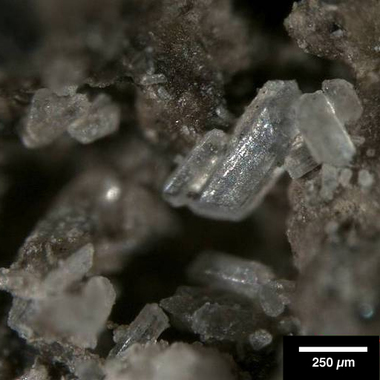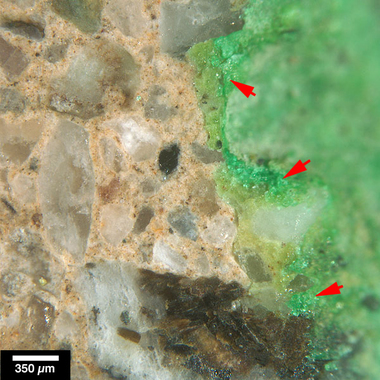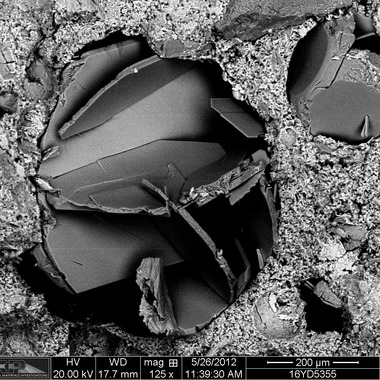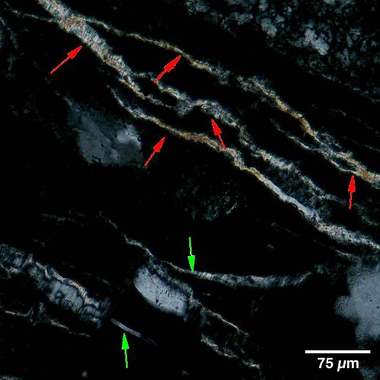Chemical Attack
Chemical attack occurs when acidic or alkaline solutions react with cementitious compounds in cement paste. In some cases, aggregates may also be susceptible to attack, such as when acids attack concrete with limestone aggregate. DRP has extensive experience with chemical attack at sites ranging from environmental, industrial, manufacturing, agricultural and mining operations to food preparation facilities.

Reflected light photomicrograph of struvite (MgNH4PO4 • 6 H2O) crystals from a fracture surface in a core from a wastewater treatment facility.

Reflected light photomicrograph of chemical attack in a wheel coating facility. The green color discoloration at the edge of a crack (red arrows) is from jamborite, an iron-nickel -bearing mineral with the chemical formula (Ni, Fe)(OH)2(OH,S,H2O).

Reflected light photomicrograph of polished surface of core from beverage warehouse where spills of acidic soft drinks led to chemical attack.

Backscatter electron micrograph of crystal of Friedel’s salt on a fracture surface from 50+ year-old culvert.

Cross-polarized transmitted light photomicrograph microcracks filled with thaumasite (red arrows) and gypsum (green arrows) in core from a chemical processing facility.

Combined backscatter and secondary electron micrograph of the surface of a pool plaster that was acid-washed and then exposed to high levels of phosphates. The EDS spectrum at the top is from the area indicated by the yellow rectangle.
Questions? We have answers. Contact us.
Give us a call at 303.938.0166 to get your project rolling.
